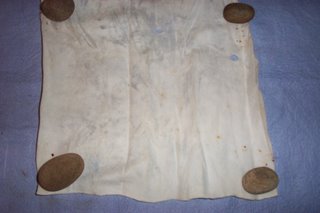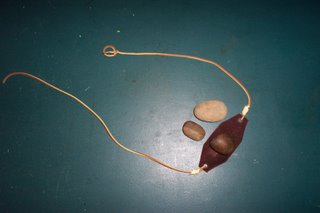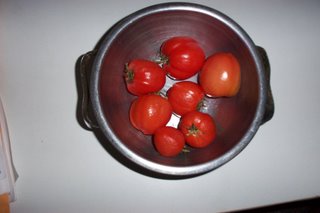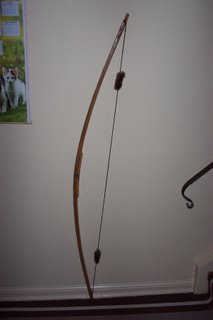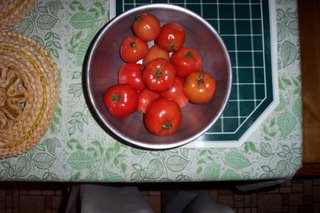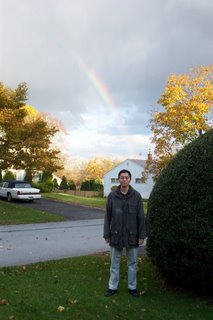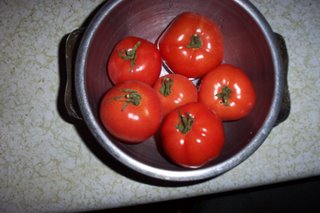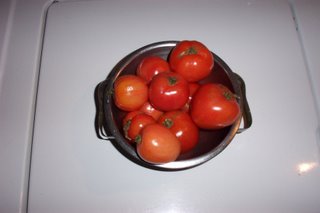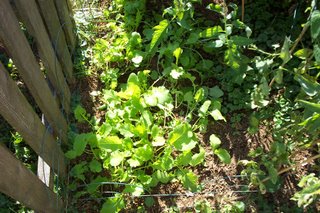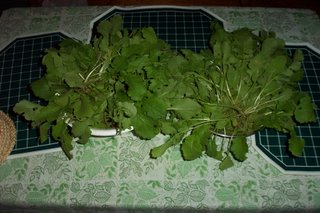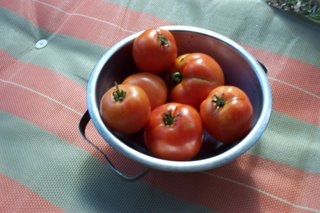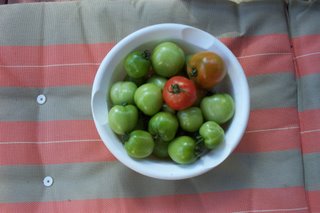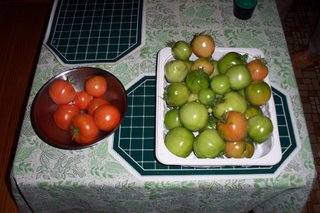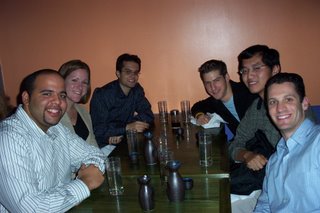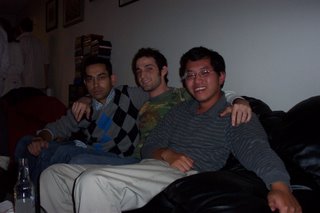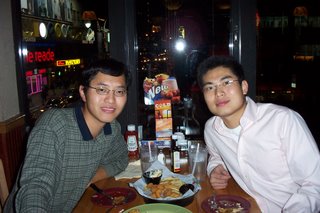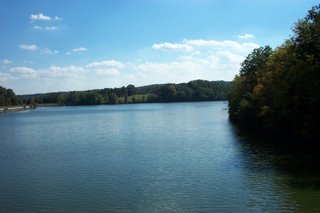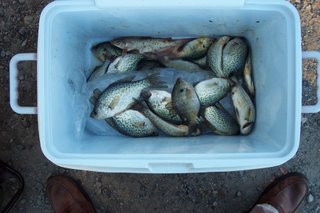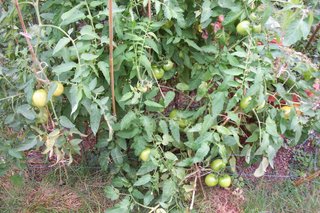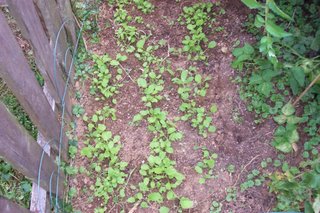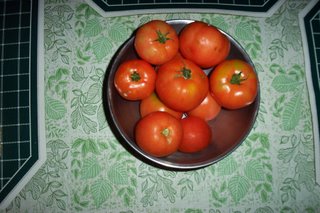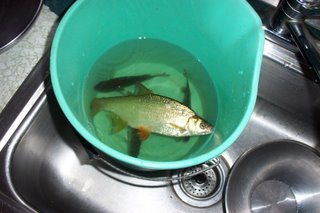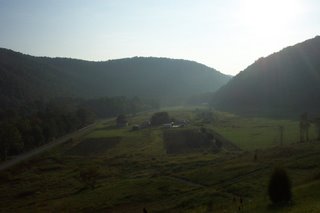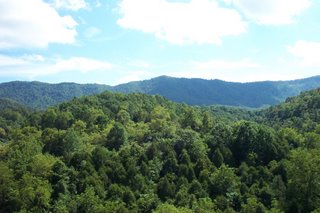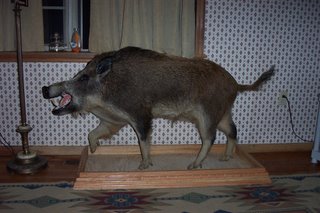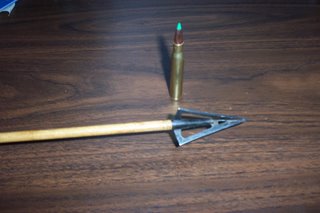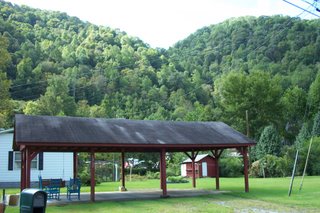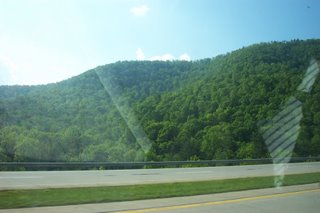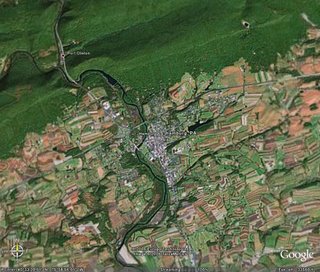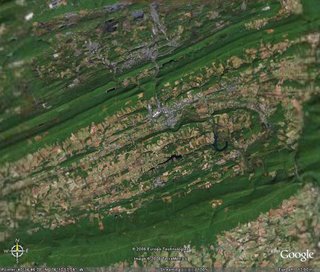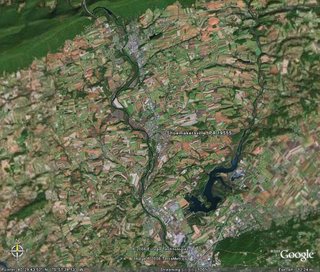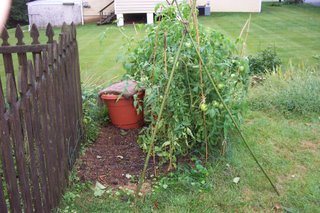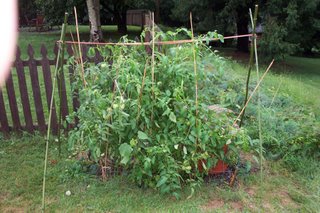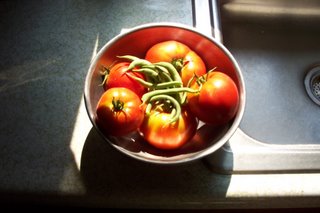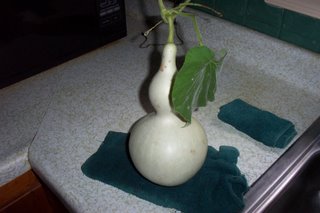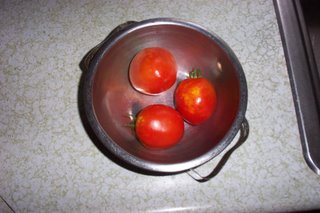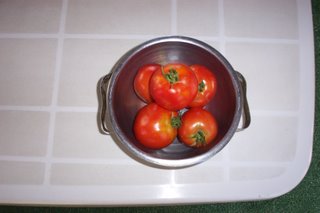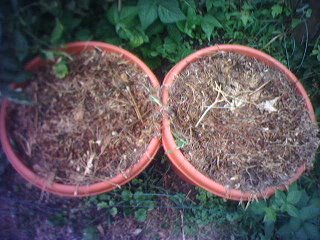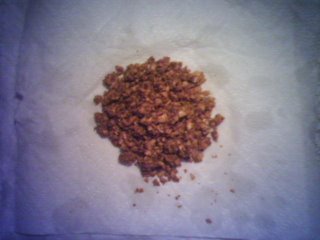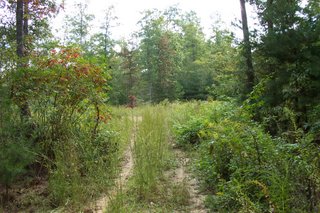
I woke up at 6am Wednesday and prepared myself. A wild boar's best sensor is his snout. Thus, I gave myself 2 separate showers with de-scenting soap to remove all traces of human scent from my body. I hadn't eaten anything in 12 hrs so as to minimize scent from breathing. My camo-suit had been resting in an air-tight bag from the rest of my clothing, that suit I now stuffed with leaves and pine needles from the surrounding forest. The suit's charcoal linings will capture the sent of the local vegetation and allow the wearer(myself) to blend in with the scents of the forest. At 7:30 am, my guide Lathern arrived at the lodge. We quickly gathered our tools and weapons and headed out into the forest. After about 20 minutes of hard trekking, we arrived at an open area where I proceeded to test out my weapons.
Lathern produced a pie-sized target that was covered by a hard bony plate, and he set that target some 25 yards away from us. He then told me that to safely hunt wild boar with the bow, my arrows must pierce that target completely. With that in mind, I drew my longbow to it's fullest extent and loosed three of my best arrows upon that target.
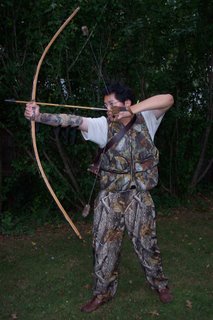
At 25 yards, all 3 missiles flew straight and true. Unfortunately, none of them managed to penetrate the bone plate. I tried again at 20 yards, to no avail. Finally, at a range of 5 yards, my arrows did indeed pierce the target's armour, but it did not penetrate all the way through the target. Alas, my longbow was simply to too weak to fatally wound a boar. At best it would have inflicted a broken rib on the boar, but more likely, my sharp arrows would only produce mere cuts and bruises on those beasts. I should've brought my 80 lb warbow instead of the 55 lb light hunting bow. So after little debate, we decided to go with the rifle instead.
Off we went to the ambush site. The weather was glorious, and the mountains of Tennessee was indeed very beautiful. The ambush site was simply a camoflouged tent placed some 40 to 50 yards behind a clearing in the forest. We laid down about 50 pounds of corn at the clearing as bait for the Boars. With that deed done, we got into the tent and waited for boars to show up. And we waited and waited and waited. Morning turned to noon, and we waited. Noon turned to afternoon and yet we were still waiting.
Late afternoon was turning into evening, and in the gathering twilight, I was drifting in and out of conciousness. A greyish/blackish figure quietly emerged from the tall grass around the clearing, it made almost no sound. I would've missed it had it not been for that sudden contrast in color at the periphery of my field of vision, it jerked me into full alertness. I looked next to me, Lathern was fully alert and intently gazing at the clearing as well. That greyish figure was a boar for sure but almost as soon as we spotted it, the beast faded back into the tall grass. For the next 15 minutes, we didn't see a soul, by then I was beginning to doze off again. Suddenly, I heard very quiet foot steps coming towards our tent from behind. Very slowly, the steps came closer and closer until I was sure it couldn't have been more than a few feet behind us. There came this heavy breathing sound from behind, and a hideous warmth resulting from that breathing permeated the thin fabric of the tent right onto my back.
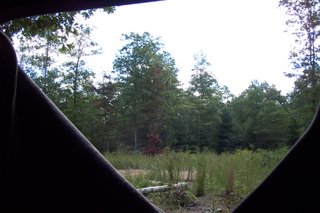
The tension at that point was thick enough to cut with a knife. Needless to say, my free hand was grasping my hunting blade so tightly that it was turning bone white. Lathern mouthed the words "don't breath, don't move" as his hand silently unsheathed his hunting knife. Every single nerve within my body seemed to be anticipating that boar charge into our tent. I wanted to scream out and run for it. But obviously, I held myself as steady as a stone, my hand never leaving the blade. After about a minute, we heard the foot steps softly move away from our tent. Less than a minute later, the boar re-emerged into the clearing from the tall grass. It was a huge beast, and far quieter than it's size would've ever suggested. Twice, nay, three times it looked at our tent and took a few steps backwards. But eventually, it headed towards the corn bait, lowered it's gigantic head and began feeding. At that point, my last shreds of self-control seemed to rest on that trigger finger. "Take him now?" I whispered to Lathern, "take him out!" was the reply. My bullet thundered out of it's barrel at supersonic speeds. In the blink of an eye, the projectile had bridged the distance to bite into that boar. It chewed through hide, bone, and flesh to reach the beating heart of the beast. Once there, it's poly-carbonate tip unlocked an expanding core of copper alloy which caused a miniature explosion in the boar's chest cavity. The boar's heart was shredded by that rotating disk of death into a ghastly puree of blood and muscle. The mighty beast grunted with sudden agony and charged off into the forest.
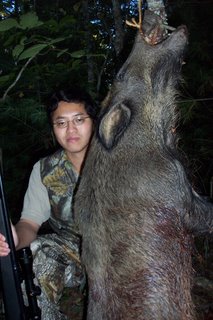
Almost at once, we were out of that tent in pursuit. Night was emerging and it should've been cold, but my body felt like it was on fire. I could hear every little sound, I could see colors as vivid as broad daylight in that spreading gloom. The 20lbs of gear in my hunting vest felt like nothing, as I ran like a madman through the trees in pursuit. The hunting rifle that usually weighed so heavily, it was a mere twig in my arm as I charged towards my dying prey. I was in rage, I was in ecstacy, I felt like a white-hot jet of molten steel, it was a feeling of ungovernable, uncontrollable, unintelligible anger and joy and dominance all at the same time!
100 yards into the deep forest, we found our prey. The boar died in an orgy of it's own blood. The blood was everywhere, it covered half the beast, it was splattered on trees and bushes, pools of the dark liquid were all over the ground. We tied the animal up a tree branch and took some photos. Afterwards, the boar was disembowled on the spot and it's organs heaped into a steaming pile on the ground. As Lathern torn out the beast's stomach, liver, and intestines in great handfuls, using my hand and the blade I clumsily ripped off the Boar's genitals. That I placed on the nearest tree as an offering to the Guardian Spirit of the Hunt. We dragged the corpse out of the woods onto Lathern's truck and eventually handed it over to the local Butcher at Robbins. Afterwards, Lathern told me that two years earlier, he had been on a similar hunt. Only in that hunt, the hunter had breathed. That boar picked up the scent, charged into the blind, mangled up the hunter's arm, and put a tusk through Lathern's leg. After hearing that story, I felt lucky to be alive. This was a very fair hunt indeed. I gave my boar the chance to strike me down, his mistake resulted in his death.
In anycase, the next day was quite anti-climatic. I spent thursday morning stalking deer with the longbow, to no success. At mid-day Lathern arrived with 70 lbs of de-boned pork straight from the village butcher. I took the pork, thanked the guide, and drove 12 hours back to PA.
